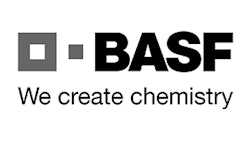
Toronto, Ontario — While it may sound like science fiction, automotive coatings using nanotechnology to give surfaces self-healing powers and to improve corrosion, fire and water resistance are now being widely used at collision repair facilities.
Despite this, many people in the collision industry have no idea how nano paints work.
Nanotechnology uses nanoparticles, which between one to 100 nanometres in size. For reference, a sheet of paper is approximately 100,000 nanometres thick.
When nanoparticles are used in vehicle paintwork, they are applied in a thin layer called a nano coating. These nanoparticles bond to create a protective layer over the surface underneath.
The technology used in nano paints is formulated to provide numerous advantages, including anti-corrosion, waterproofing, self-healing and scratch-resistant properties. In the collision repair industry, these coatings are frequently used on the outside of a vehicle as well as on engines and on glass.
The advanced technologies used in nano coatings can provide numerous special benefits. For example, the silica nanoparticles in some ceramic coatings bond to the vehicle’s surface, creating a water-resistant, hydrophobic surface that also provides improved corrosion, scratch and UV resistance.
Self-healing nano coatings contain microcapsules that break open and release film-forming substances when the coating is scratched. This expanding substance prevents damage by closing cracks and stopping moisture infiltration.
Nano coatings can also offer aesthetic benefits. Companies like AkzoNobel, BASF, and PPG use pigment nanotechnologies to manufacture coatings that remain glossy and brilliant no matter what conditions a vehicle faces. One such fade-resistant product was Axalta’s 2025 colour of the year, Evergreen Sprint, which is described by the company as “a rich, deep forest green that pays homage to the legendary British racing green.”
Nano paints are also being used to make the automotive coatings sector more sustainable. In a push to reduce the industry’s environmental footprint, nanotechnology has been utilized to develop products low in volatile organic compounds.
VOCs are air pollutants that are commonly found in adhesives, paint and plastics and are emitted after automotive repair products are applied to a surface. Some, such as benzene, a colourless liquid found in paint and paint thinners, are classified as carcinogenic. Powder coatings do not contain solvents and release insignificant amounts of VOCs.
According to their press release, Axalta Coating Systems is “the first manufacturer within the powder coatings industry to receive International Sustainability and Carbon Certification Plus (ISCC Plus) for biobased feedstock sourcing practices.”
With the durability of nano coatings, collision repair costs for consumers are expected to decrease, highlighting the need for collaboration between auto shops and automotive manufacturers to ensure the brightest future for nanotechnology in the collision repair industry.
Whether or not collision repairers understand how nano paints work, they will remain a common sight in paint booths. According to a recent report, the global nano coating market is predicted to grow by 16.8 percent CAGR, from US$9.2 billion in 2024 to US$41.6 billion, over the next 10 years.










.xJx83h5tif.png?ar=16%3A9&auto=format%2Ccompress&fit=crop&h=135&q=70&w=240)
.N8PCyjbG21.png?ar=16%3A9&auto=format%2Ccompress&fit=crop&h=135&q=70&w=240)

